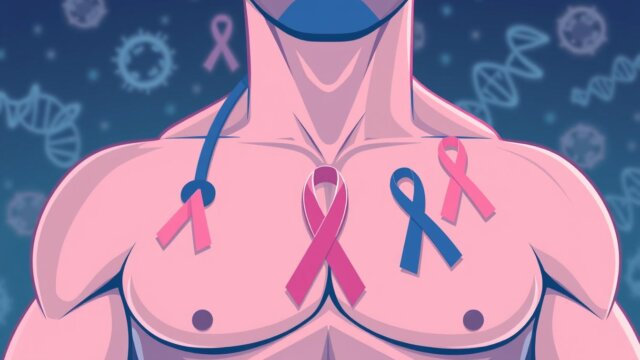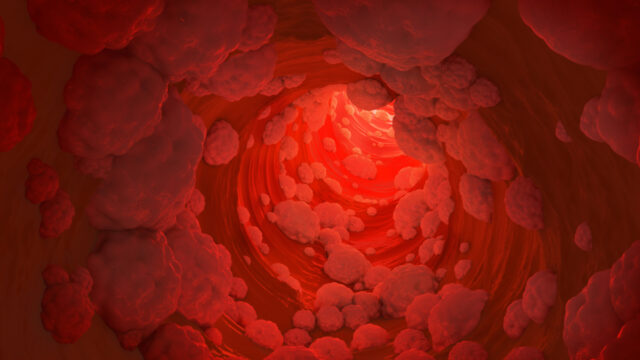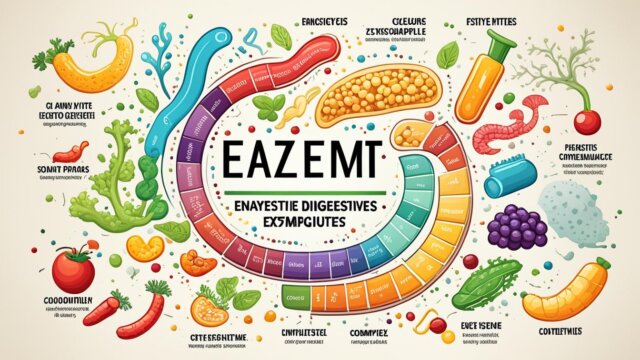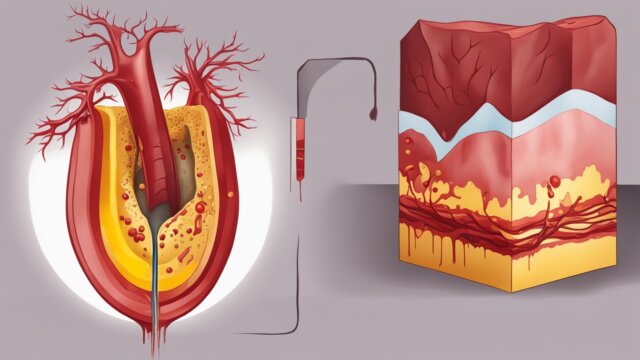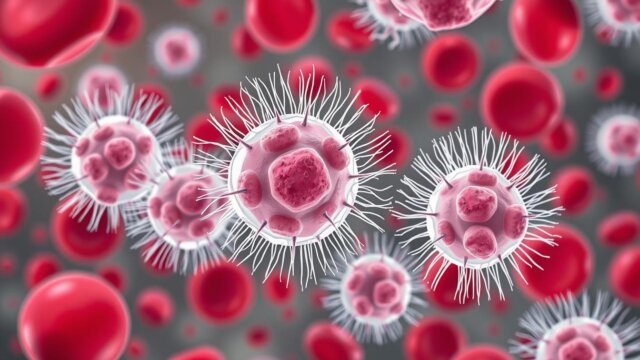FTC disclaimer: This post may contains affiliate links and we will be compensated if you click on a link and make a purchase.
Did you know that more than half of adults with celiac disease don’t show symptoms in their digestive system? This condition is an autoimmune disorder caused by gluten. Gluten is a protein in wheat, barley, and some grains. It can affect your health in many ways.
When people with celiac disease eat gluten, their immune system overreacts. This damages the tiny projections (villi) in the small intestine. Without these projections, the body can’t absorb nutrients well. This leads to many symptoms. Celiac disease is serious but can be managed with a gluten-free diet.
Key Takeaways
- Celiac disease is an autoimmune disorder triggered by the consumption of gluten, a protein found in wheat, barley, and other grains.
- Damage to the small intestine’s villi prevents proper nutrient absorption, leading to a range of digestive and non-digestive symptoms.
- Children with celiac disease are more likely than adults to have digestive issues, such as failure to thrive, tooth enamel damage, weight loss, anemia, and delayed puberty.
- Celiac disease tends to run in families, and individuals with a family history should consider testing.
- Untreated celiac disease can lead to serious complications, including malnutrition, bone weakening, infertility, and an increased risk of certain cancers.
What is Celiac Disease?
Celiac disease is an autoimmune disorder. It happens when the body’s immune system reacts too strongly to gluten. Gluten is in wheat, barley, and rye.
This reaction damages the tiny, hair-like projections (villi) in the small intestine. These damaged villi can’t absorb nutrients well. This leads to malabsorption and health problems.
Overview of the Autoimmune Disorder
Celiac disease is often linked to genes. People with certain genes or family members with the disease are at higher risk. It’s more common in white Americans than in other groups. Women are more likely to get it than men.
People with certain conditions like Down syndrome or Turner syndrome are more likely to have celiac disease.
How Celiac Disease Affects the Small Intestine
The immune system attacks and damages the villi in the small intestine with celiac disease. This makes it hard for the body to absorb nutrients from food.
If not treated, celiac disease can lead to serious problems. These include osteoporosis, anemia, and malnutrition. It can also cause nervous system issues, reproductive problems, and increase the risk of some cancers.
Some people with celiac disease don’t get better even on a gluten-free diet. This is called refractory celiac disease. They need special treatment.
Symptoms of Celiac Disease
Digestive Symptoms in Adults
Celiac disease can cause many digestive issues. Adults may have diarrhea, feel very tired, lose weight, and feel bloated. They might also have stomach pain, feel sick to their stomach, or have trouble going to the bathroom.
Non-Digestive Symptoms in Adults
Celiac disease can also show in ways not related to digestion. Many adults may feel anemic or have weaker bones. They might get a skin rash, mouth sores, headaches, or nerve problems.
Not everyone with celiac disease has the same symptoms. Some might not have any digestive problems. It’s key to keep an eye on health and get regular tests to manage the disease well.
“Celiac disease can affect the digestive system and other areas of the body, leading to a variety of symptoms that can vary greatly from person to person.”
Digestive Symptoms | Non-Digestive Symptoms |
|---|---|
Diarrhea | Anemia |
Fatigue | Osteoporosis |
Weight loss | Dermatitis herpetiformis |
Bloating | Mouth ulcers |
Abdominal pain | Headaches |
Nausea | Nerve damage |
Constipation | Joint pain |
Reduced spleen function |
Symptoms in Children
Kids with celiac disease often have tummy troubles like nausea, vomiting, and diarrhea. They might also have a swollen belly, constipation, and stools that look pale and smell bad. Not getting enough nutrients can make them not grow well, hurt their teeth, and make them lose weight.
They might also feel tired, irritable, and not grow as tall as they should. Some kids might have trouble learning, headaches, and move less smoothly.
Young kids might have gas, pale stools, and damage to their teeth. They could be shorter, anemic, and have trouble growing. Older kids might not show signs until something stressful happens, then they could have diarrhea, lose weight, and feel tired.
They might also have anemia, get migraines, and have trouble with nerve function.
Symptom | Infants and Young Children | Teenagers |
|---|---|---|
Digestive Issues | Gas, pale/foul-smelling stools, chronic diarrhea, constipation, vomiting, bloating, pain | Diarrhea, abdominal pain |
Growth and Nutrition | Failure to thrive, short stature, anemia, tooth enamel damage | Weight loss, fatigue, anemia |
Neurological Symptoms | Irritability | Migraines, peripheral neuropathy |
Some kids with celiac disease might not show any signs, even if their small intestine is damaged.
Celiac Rash (Dermatitis Herpetiformis)
Celiac disease can show up as a rash called dermatitis herpetiformis. This rash is linked to changes in the small intestine, even if you don’t have digestive issues. About 60% of kids and 41% of adults with celiac disease don’t show any symptoms but are still at risk.
The dermatitis herpetiformis rash often shows up on the elbows, knees, torso, scalp, or buttocks. It’s more common in boys and usually starts in teens. This rash gets better with a gluten-free diet, medicine, or both.
- About 2 million Americans have celiac disease and need to eat gluten-free.
- Those with celiac disease but no symptoms are more likely to have poor nutrition and health issues.
- One-third of Americans have genes linked to celiac disease.
- It takes an average of four years to diagnose celiac disease.
- A few people with celiac disease don’t get better on a gluten-free diet and might need steroids.
Going gluten-free is the main way to treat celiac disease, including dermatitis herpetiformis. Researchers are looking into new treatments like enzymes or immunotherapy to help people eat gluten safely.
“Meat, fish, rice, beans, fruits, and vegetables are safe for people with celiac disease if they’re made without gluten.”
It’s important to know how celiac disease, like dermatitis herpetiformis, shows up for early diagnosis and good treatment. Researchers are working hard to make life better for those with celiac disease and related conditions.
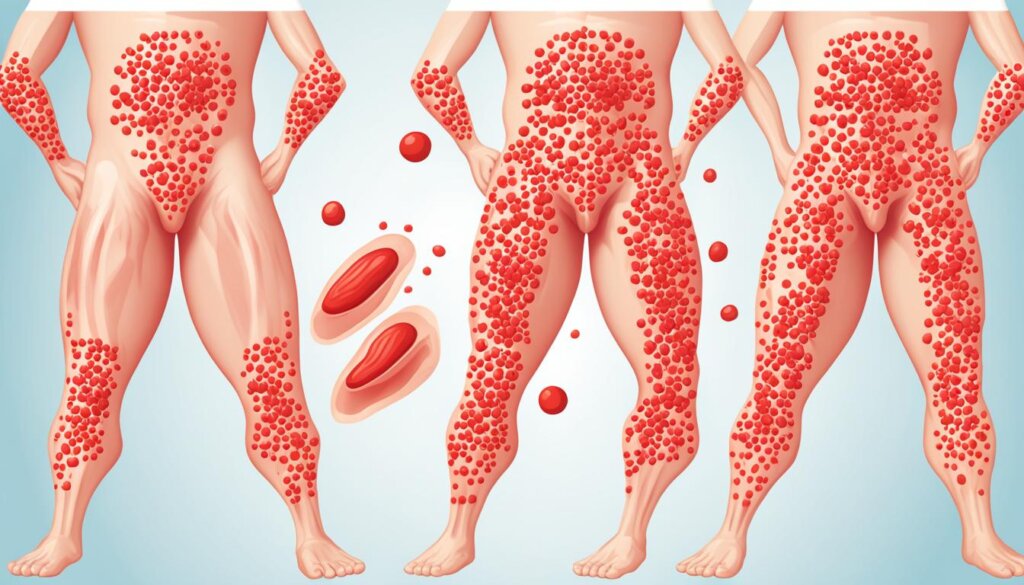
Causes and Risk Factors
The exact cause of celiac disease is not fully known. It seems to come from a mix of genetic predisposition and environmental factors. Research shows that certain genes make people more likely to get it.
Genetic and Environmental Factors
Celiac disease often happens in families, making it more likely for those with a family history. If one twin gets it, the other twin’s chance goes up to about 75%. It’s linked to certain genes, like the HLA-DQ genes, which help with the immune system and can be passed down. Early infections in the gut can also make getting celiac disease more likely.
Increased Risk for Certain Groups
Some health issues, like type 1 diabetes, Down syndrome, and autoimmune thyroid disease, make getting celiac disease more likely, but we don’t know how they connect. People of European ancestry are more likely to have a gene linked to celiac disease. Those from Central and South America are more likely to have another gene linked to it.
Condition | Increased Risk |
|---|---|
Type 1 Diabetes | Elevated |
Down Syndrome | Elevated |
Autoimmune Thyroid Disease | Elevated |
Things like stress, childbirth, surgery, and other autoimmune issues might also trigger celiac disease in those who are more likely to get it, but we don’t know how.
“Celiac disease has a strong genetic component with causative factors including specific genes (HLA-DQ2 and HLA-DQ8), with approximately 96% of diagnosed individuals carrying these genes.”
Even though 30% of people have the genes for celiac disease, only 3% will actually get it. This shows there are other factors at play.
Understanding how genes and environment work together is key to figuring out celiac disease.
Complications of Untreated Celiac Disease
If you don’t treat celiac disease, it can harm your health a lot. It can hurt how your body absorbs nutrients. This leads to malnutrition, anemia, and losing weight. Kids might not grow well or develop on time.
Not getting enough vitamins and minerals can make your bones weak. This increases the risk of osteopenia, osteoporosis, and rickets. Women with celiac disease might have trouble getting pregnant and could have a higher chance of miscarriage.
Other problems can happen too, like not being able to digest lactose, getting certain cancers, and having seizures or nerve damage. People with celiac disease might also feel anxious, depressed, and have other mental health issues.

Getting diagnosed early and sticking to a gluten-free diet is key. It helps avoid serious problems and keeps you healthy. Talking to a doctor and a dietitian can help you manage your celiac disease. This way, you can lower the risk of long-term issues.
Celiac Disease Diagnosis
Diagnosing celiac disease often means doing blood tests and a small intestine biopsy. Blood tests look for antibodies that show an immune reaction to gluten. Tests check for HLA-DQ2 and HLA-DQ8 genes linked to the disease.
Blood Tests and Biopsy
If blood tests hint at celiac disease, an endoscopy and biopsy of the small intestine come next. During the endoscopy, the doctor takes a sample to see if gluten has caused damage. This biopsy confirms if you have celiac disease.
Marsh Score for Intestinal Damage
The Marsh score checks how much damage there is, from 0 to 4. A higher score means more damage and a worse disease state. This score helps doctors plan treatment.
Don’t start a gluten-free diet before testing for celiac disease, as it can change the results. After confirming the disease, more tests might be done to check for nutritional issues or other problems.
“For most people with celiac disease, eating a gluten-free diet allows the small intestine to heal, typically taking 3 to 6 months for children and several years for adults.”
Regular check-ups with doctors are key to see if the gluten-free diet is working and to handle any issues. In some cases, more medicine might be needed for ongoing inflammation and symptoms.
Nonresponsive Celiac Disease
Some people with celiac disease don’t get better with a gluten-free diet. This is called nonresponsive celiac disease. It can happen if they accidentally eat gluten or if their food is not gluten-free. Other reasons include bacterial growth in the small intestine, colitis, or not making enough pancreatic enzymes.
About 30% of people with celiac disease still have symptoms after eating gluten-free. A serious form called refractory celiac disease affects a small number of people. Not following a gluten-free diet is a big reason why some people don’t get better.
Managing nonresponsive celiac disease is hard. Between 7% to 52% of adults with celiac disease don’t get better. In kids, 15% still have symptoms 6 months after being diagnosed. Girls and thinner kids often have it, and they might have constipation and belly pain.
Doctors need to check carefully to help people with nonresponsive celiac disease. Experts like Prof David Sanders and Dr. Jeremy Woodward lead teams to help these patients.

We need more research and a team effort to help people with nonresponsive celiac disease. This way, they can get the care they need to feel better.
Celiac Disease vs. Gluten Intolerance
Celiac disease and gluten intolerance are two different health issues. They both can happen when you eat foods with gluten. But, they affect people in different ways and have different effects on health.
Celiac disease is an autoimmune disorder. It happens when your body wrongly attacks gluten, damaging your small intestine. Gluten intolerance, however, is just a sensitivity to gluten. It doesn’t involve an immune system reaction or harm to the intestines.
People with celiac disease need to eat gluten-free to protect their intestines and manage their health. Those with gluten intolerance might feel better by eating less or no gluten. They don’t face the same risks as those with celiac disease.
To diagnose celiac disease, doctors use a blood test for gluten antibodies and a small intestine biopsy. Finding out if you have gluten intolerance means checking for celiac disease and wheat allergy first. There’s no special test for it.
Remember, a gluten-free diet is key for celiac disease, but it’s not always needed for others. Knowing the difference between celiac disease and gluten intolerance helps in getting the right medical care and treatment.
“Recognizing the distinction between celiac disease and gluten intolerance is key to ensuring proper diagnosis and management of these conditions.”
Celiac Disease vs. Wheat Allergy
Celiac disease and wheat allergy both deal with wheat reactions but are different. Celiac disease is an autoimmune issue where the body attacks the small intestine when eating gluten. This leads to many digestive symptoms. Wheat allergy, however, is a true food allergy causing immediate reactions like hives and congestion.
Celiac disease symptoms come on slowly and mainly hit the digestive system. People may feel abdominal pain, bloating, and get tired easily. Wheat allergies can cause quick and serious symptoms like trouble breathing and sneezing. To diagnose these, celiac disease needs a blood test and a biopsy. Wheat allergies are tested with skin prick or blood tests.
Treatment for these conditions is different. Those with celiac disease must avoid all gluten to prevent health issues. People with a wheat allergy can eat other grains but should avoid wheat products. It’s key to know the difference to manage and treat them right.
Celiac Disease | Wheat Allergy |
|---|---|
An autoimmune disorder caused by gluten | Food allergy to a part of wheat, not necessarily gluten |
Gradual onset of digestive symptoms | Immediate allergic reactions like hives, congestion |
Diagnosed by blood test and biopsy | Diagnosed by skin prick or blood test |
Requires strict gluten avoidance | May be able to tolerate other grains |
In summary, celiac disease and wheat allergy both react to wheat but differently. They need different treatments and care. Knowing the differences is key for right diagnosis and care.
Treatment: The Gluten-Free Diet
The main way to treat celiac disease is a strict, gluten-free diet. You must avoid all foods with wheat, barley, rye, and gluten-containing grains. Always check food labels for hidden gluten. This diet helps the small intestine heal and stops more damage. But, it’s hard to avoid gluten completely and fix any nutrient gaps.
Avoiding Gluten-Containing Foods
Staying away from gluten is key because even a little can cause harm. Now, there are many gluten-free foods like bread, pasta, and more in stores. You can use grains like potato, rice, and quinoa to eat gluten-free. But, watch out for gluten in things like beer, candy, and sauces. Make sure to keep your kitchen safe from gluten to avoid mixing foods.
Reading Food Labels
Always check food labels to make sure they’re gluten-free. Also, look at medicine labels for gluten. Gluten-free foods can still have calories, so watch your portions. Always be careful to avoid gluten by mistake. Joining support groups online or in person can help with a gluten-free life.
“A gluten-free diet is the sole treatment for individuals diagnosed with celiac disease.”
Long-Term Management
Managing celiac disease means always being careful, even after starting a gluten-free diet. People with celiac disease must watch for any ongoing or new nutrient shortages. These might need extra supplements.
The gluten-free diet can lead to missing out on thiamin, riboflavin, niacin, folate, iron, and fiber. Regular blood tests and sometimes biopsies check if the small intestine heals and the diet works well.
Monitoring Nutrient Deficiencies
Celiac disease can cause shortages of iron, vitamin D, and B vitamins. Research shows that people with celiac disease on a gluten-free diet for a long time might not get enough nutrients. Not getting enough vitamin B12 is a big concern in untreated celiac disease.
Studies look at folate, RBC folate, and homocysteine levels to check on nutrition in people with celiac disease.
Follow-Up Testing
Checking back regularly is key for those with celiac disease. Blood tests and maybe more biopsies make sure the small intestine heals and the diet helps control the disease. Long-term studies show how often and why people with celiac disease still have gut damage on a gluten-free diet.
Health groups give guidelines on a good gluten-free diet and watch for other autoimmune issues.

Handling celiac disease well means being active and careful. By keeping an eye on nutrient levels and testing the small intestine, people with celiac disease can keep their health in check.
Conclusion
Celiac disease is a serious condition that needs a strict gluten-free diet for life. This diet helps control symptoms and heals the small intestine. But, it’s important to avoid all gluten and fix any nutrient gaps.
With the right treatment and regular checks, people with celiac disease can stay healthy and live well. But, it’s crucial to take this condition seriously to avoid serious problems.
Celiac disease is more common in people from Europe. In the U.S., about 0.71% of people have it. In Europe, it’s found in 1 in 99 to 1 in 113 people. Things like genes and gluten intake also affect getting this disease.
Managing celiac disease means sticking to a gluten-free diet. This lowers the risk of serious issues like anemia, infertility, and cancer. It’s key to check your health often and keep an eye on nutrient levels.
By focusing on managing your celiac disease, you can lead a happy and healthy life.
FAQ
What is celiac disease?
Celiac disease is an autoimmune disorder caused by eating gluten. Gluten is in wheat, barley, and some grains. When someone with celiac eats gluten, their immune system gets too strong. This harms the small intestine’s lining.
This damage stops the body from absorbing nutrients. It leads to many health problems.
What are the symptoms of celiac disease?
Adults with celiac often have diarrhea, feel tired, lose weight, and feel bloated. They may also have belly pain, feel sick to their stomach, or have trouble going to the bathroom.
About half of adults also have other symptoms like anemia, weak bones, skin rashes, mouth sores, headaches, nerve problems, joint pain, and a smaller spleen.
Kids with celiac might throw up, have diarrhea, feel sick, have a big belly, or have trouble absorbing nutrients.
What causes celiac disease?
We don’t know all about celiac disease yet. But it seems to be caused by genes and the environment. People with certain genes are more likely to get it. Having family members with it or other autoimmune diseases also raises the risk.
How is celiac disease diagnosed?
Doctors use blood tests to look for gluten antibodies. They might also do an endoscopy and biopsy of the small intestine. The Marsh score shows how much damage there is.
Don’t start a gluten-free diet before testing. It can change the results.
How is celiac disease treated?
The main treatment is a gluten-free diet for life. This means avoiding foods with wheat, barley, rye, and gluten grains. This diet helps the intestine heal and stops more damage.
It’s important to be careful to avoid gluten and check for nutrient shortages.
How is celiac disease different from gluten intolerance or a wheat allergy?
Celiac disease is an autoimmune disorder that hurts the small intestine. Gluten intolerance or sensitivity doesn’t cause the same immune reaction or damage. Wheat allergy is a real food allergy that affects the lungs, not just the stomach.
What are the potential complications of untreated celiac disease?
Without treatment, celiac disease can cause serious problems. These include malnutrition, anemia, losing weight, weak bones, infertility, more chance of some cancers, and nerve problems like seizures and numbness.
What is nonresponsive celiac disease?
Nonresponsive celiac disease happens when a gluten-free diet doesn’t help. This could be from gluten in food, or other health issues like bacterial growth, microscopic colitis, or a rare type of celiac disease.

